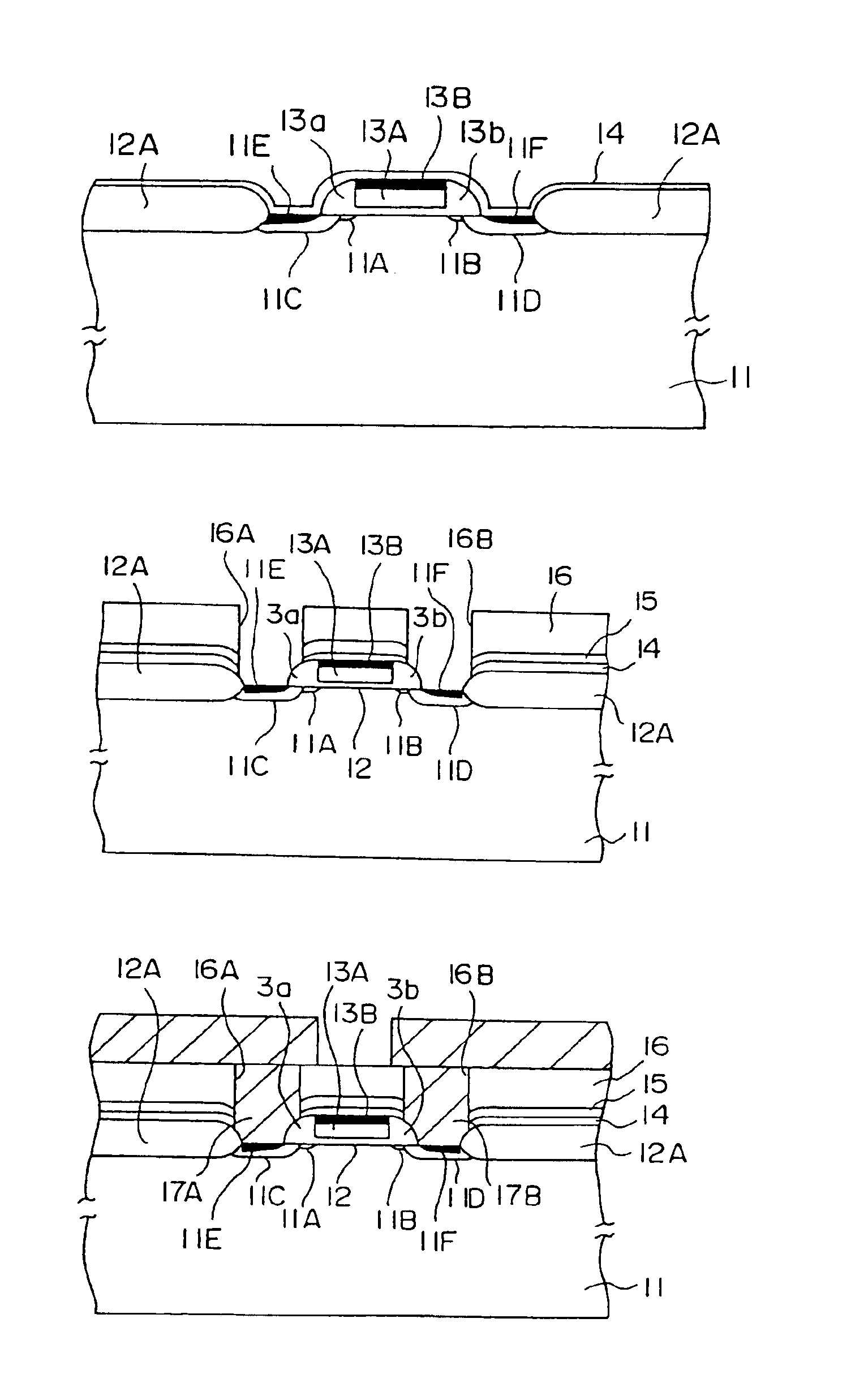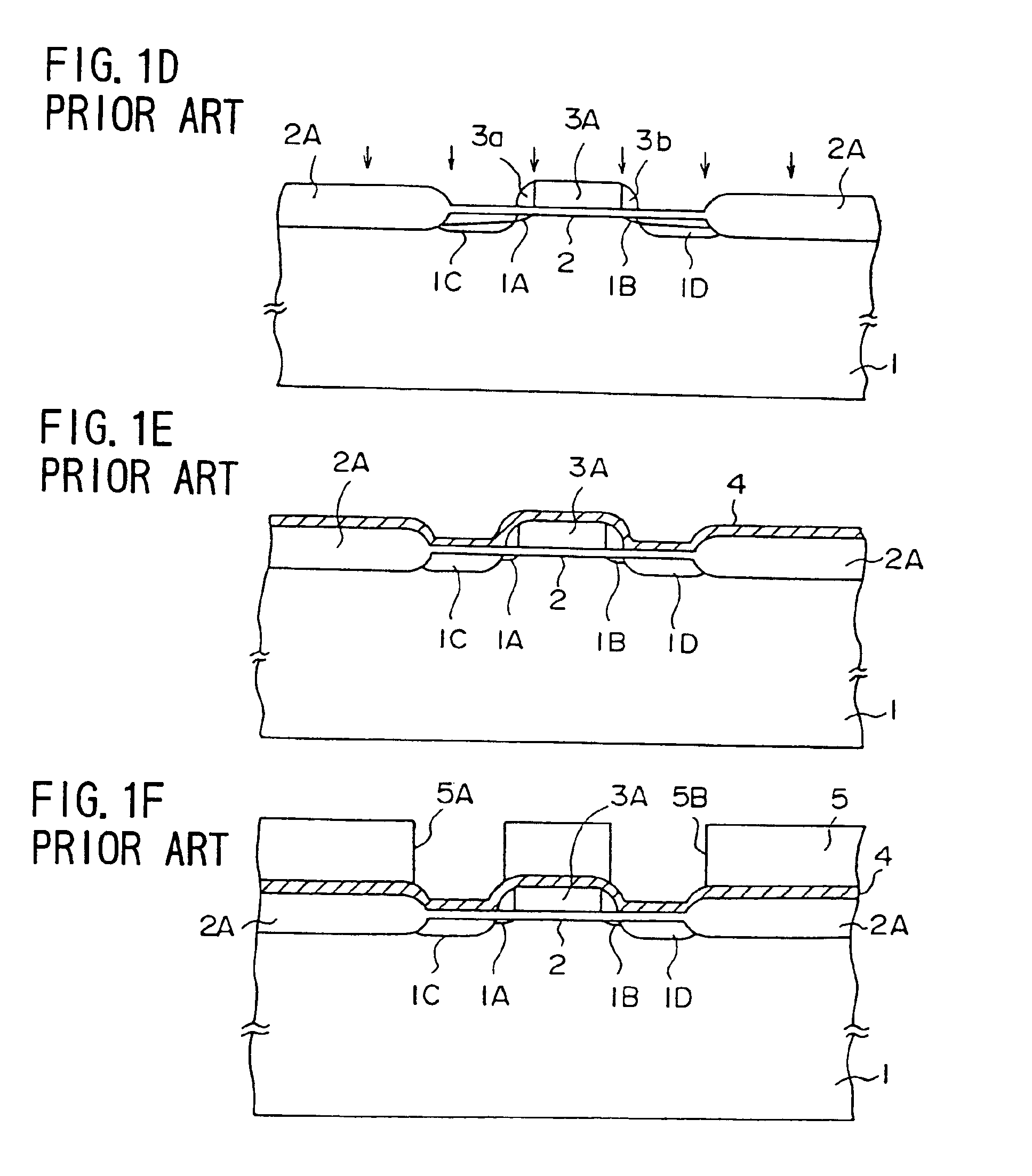Semiconductor device having an insulation film with reduced water content
a technology of semiconductor devices and insulation films, applied in the direction of semiconductor devices, electrical devices, transistors, etc., can solve the problems of deviation of threshold voltage, drain current becomes no longer controllable by gate voltage, and extreme miniaturized semiconductor devices tend to suffer from so-called short-channel effect, etc., to reduce the resistance of very shallow diffusion regions and the effect of h2o
- Summary
- Abstract
- Description
- Claims
- Application Information
AI Technical Summary
Benefits of technology
Problems solved by technology
Method used
Image
Examples
first embodiment
FIGS. 15A-15I show a fabrication process of a MOS transistor according to a first embodiment of the present invention.
Referring to FIG. 15A, a gate oxide film 12 and a field oxide film 12A are formed on a p-type Si substrate 11 corresponding to the Si substrate 1 of FIG. 1A, and a polysilicon layer 13 is deposited on the structure of FIG. 15A in the step of FIG. 15B. The polysilicon layer 13 thus deposited is then doped to the n+-type by an ion-implantation of P+ ions and patterned in the step of FIG. 15C to form a gate electrode 13A. The ion implantation process of FIG. 15B may be conducted under an acceleration voltage of 20 keV with a dose of 4×1015 cm−2. In the step of FIG. 15C, an ion implantation process of As+ is further conducted while using the gate electrode 13A as a mask, to form shallow diffusion regions 11A and 11B of the n+-type at both lateral sides of the gate electrode 13A by a self-alignment process. The ion implantation process of FIG. 15C may be conducted under a...
second embodiment
FIGS. 16A-16O show a fabrication process of a semiconductor device according to a second embodiment of the present invention.
Referring to FIG. 16A, a Si substrate 21 of the p-type or n-type is covered by a native oxide film 22N, and an SiN mask 23A as well a an SiN mask 23B are provided on the substrate 21 such that the SiN mask 23A protects an NMOS region on which an NMOS transistor is to be formed. Similarly, the SiN mask 23B protects a PMOS region on which a PMOS transistor is to be formed. The mask 23A and 23B are separated and there is formed a gap between the region for the NMOS transistor and the region for the PMOS transistor. The gap exposes the native oxide film 22N formed on the substrate 21.
Next, in the step of FIG. 16B, the structure of FIG. 16A is subjected to a wet oxidation process to form a field oxide film 23 in correspondence to the foregoing gap typically with a thickness of about 250 nm. Further, a mask M1 is provided in the step of FIG. 16B so as to cover the P...
PUM
 Login to View More
Login to View More Abstract
Description
Claims
Application Information
 Login to View More
Login to View More - R&D
- Intellectual Property
- Life Sciences
- Materials
- Tech Scout
- Unparalleled Data Quality
- Higher Quality Content
- 60% Fewer Hallucinations
Browse by: Latest US Patents, China's latest patents, Technical Efficacy Thesaurus, Application Domain, Technology Topic, Popular Technical Reports.
© 2025 PatSnap. All rights reserved.Legal|Privacy policy|Modern Slavery Act Transparency Statement|Sitemap|About US| Contact US: help@patsnap.com



